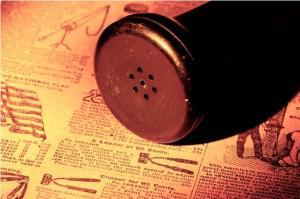Tuesday Teachings from the archives: I’ve been going back through the wonderful content on Writer…Interrupted and wanted to share the relevant teaching from past posts! Hope you enjoy this new Tuesday feature!- Gina
 Three of my first four contracted books involve a step back in time to the days of World War Two. I may have been born in the 70s, but I’ve always held a love for and fascination with the life and times of the 40s, particularly the war years. In many ways, it was completely natural to find my first novel set during that time. And it was a joy to uncover two additional stories from that time period.
Three of my first four contracted books involve a step back in time to the days of World War Two. I may have been born in the 70s, but I’ve always held a love for and fascination with the life and times of the 40s, particularly the war years. In many ways, it was completely natural to find my first novel set during that time. And it was a joy to uncover two additional stories from that time period.
But how does someone who was born 30 years after the events weave them into a story in a believable way? Here are a few tricks of the trade I’ve learned.
1) Study the culture and media of the time. I have always LOVED the old black and white movies from the early forties. Bringing Up Baby, It Happened One Night, You Can’t Take It with You, and the Thin Man series are some of my favorite movies of all time. Add in Fred Astaire & Ginger Rodgers, Gene Kelly and Bing Crosby, starlets like Katherine Hepburn and Myrna Loy and you can begin to get a feel for the styles of the time.
Now you have to be careful. Much as I love Audrey Hepburn, I can’t use her in a book from the early 40s…she wasn’t acting yet. So writers have to pay attention to copyrights on movies…Kate Hepburn wore pants in Bringing Up Baby, which released in 1938. By 1943 that was a well-established style that many attributed to her. And that leads me to my next tip…
2) Buy resources that illustrate the styles and vehicles of the time. As I wrote Sandhill Dreams, I realized I needed help describing the different styles in hats and clothing. I turned to Amazon and found a couple great resources. One was Everyday Fashions of the Forties as pictured in Sears Catalog. It’s perfect…Sears stores and catalogs were available throughout Nebraska, the setting for my World War Two series. Now I had the catalog illustrations and descriptions for the styles. It also gave me the details to back up things I knew, like during the war women couldn’t purchase pantyhose, so they drew lines up the back of their legs to mimic hose. But they also had make-up specifically designed to look like hose. Those are the details that make a book and a time period come alive.
3) Interview people who lived during that time – if you can. My time period is the early 1940s, so I interviewed my grandparents and others who lived then. If you plan to write about an earlier time period, then you’ll need to rely on resources like journals, newspapers, and other written accounts. But if you can, take the time to track down those who lived it. One night I had a delightful conversation with a veteran who had traveled through the North Platte Canteen 5 times as a soldier. Each visit was different, and he gladly shared his impressions and memories with me. His stories reinforced those I had found through other resources.
4) If you can’t interview people, don’t forget to look for sources that did. I found several invaluable resources in published books, Public television broadcasts, and spending a day with the Fort Robinson Museum curator who had interviewed dozens of veterans when they returned to the Fort. While I couldn’t interview these people, others had.
If you are writing or hope to write a historical novel, take the time to get the details right. Your readers will thank you.
